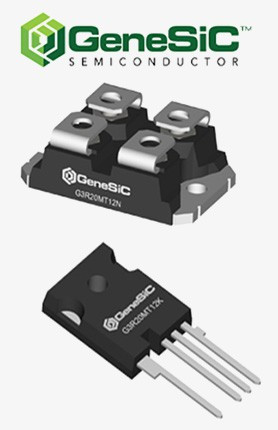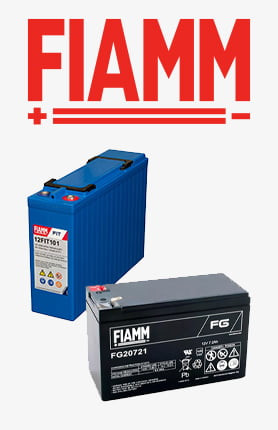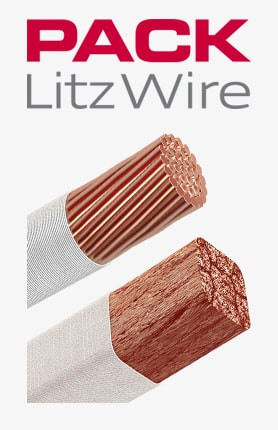Трябва да сте влезли в
-
moreX
-
Компоненти
-
-
Category
-
полупроводници
- Диоди
- Тиристори
-
Електрически изолирани модули
- Електроизолирани модули VISHAY (IR).
- Електроизолирани модули INFINEON (EUPEC).
- Електрически изолирани модули на Semikron
- Електроизолирани модули POWEREX
- Електроизолирани модули IXYS
- Електроизолирани модули от POSEICO
- Електрически изолираните модули на ABB
- Електроизолационни модули от TECHSEM
- Go to the subcategory
- Мостови токоизправители
-
Транзистори
- GeneSiC транзистори
- Mitsubishi SiC MOSFET модули
- STARPOWER SiC MOSFET модули
- ABB SiC MOSFET модули
- IGBT модули от MITSUBISHI
- Транзисторни модули MITSUBISHI
- MITSUBISHI MOSFET модули
- Транзисторни модули ABB
- IGBT модули от POWEREX
- IGBT модули - от INFINEON (EUPEC)
- Полупроводникови елементи от силициев карбид
- Go to the subcategory
- Шофьори
- Силови блокове
- Go to the subcategory
- Преобразуватели за ток и напрежение LEM
-
Пасивни компоненти (кондензатори, резистори, предпазители, филтри)
- Резистори
-
Предпазители
- Миниатюрни предпазители за електронни системи серия ABC и AGC
- Бързодействащи тръбни предпазители
- Забавени вложки с GL/GG и AM характеристики
- Изключително бързи предпазители
- Британски и американски стандартни бързодействащи предпазители
- Бързодействащи предпазители европейски стандарт
- Тягови предпазители
- Предпазители за високо напрежение
- Go to the subcategory
-
Кондензатори
- Кондензатори за двигатели
- Електролитни кондензатори
- Icel филмови кондензатори
- Силови кондензатори
- Кондензатори за постояннотокови вериги
- Кондензатори за компенсация на мощността
- Кондензатори за високо напрежение
- Кондензатори за индукционно нагряване
- Импулсни кондензатори
- DC LINK кондензатори
- Кондензатори за AC/DC вериги
- Go to the subcategory
- Филтри против смущения
- Суперкондензатори
- Защита от пренапрежение
- Разкриващи емисионни филтри TEMPEST
- Защита от пренапрежение
- Go to the subcategory
-
Релета и контактори
- Теория на релетата и контакторите
- AC 3-фазни твърдотелни релета
- DC твърдотелни релета
- Регулатори, системи за управление и аксесоари
- Мек старт и реверсивни контактори
- Електромеханични релета
- Контактори
- Ротационни превключватели
-
Еднофазни AC твърдотелни релета
- Еднофазни променливотокови полупроводникови релета Серия 1 | D2425 | D2450
- Еднофазни AC полупроводникови релета CWA и CWD серия
- Еднофазни AC полупроводникови релета серии CMRA и CMRD
- Еднофазни AC твърдотелни релета PS серия
- AC твърдотелни релета двойни и четворни серии D24 D, TD24 Q, H12D48 D
- Еднофазни полупроводникови релета от серия GN
- Еднофазни променливотокови твърдотелни релета серия CKR
- Монофазни AC релета за DIN шина ERDA и ERAA СЕРИЯ
- Монофазни AC релета за ток 150А
- Двойни твърдотелни релета, интегрирани с радиатор на DIN шина
- Go to the subcategory
- AC еднофазни печатни твърдотелни релета
- Интерфейсни релета
- Go to the subcategory
- Ядра и други индуктивни компоненти
- Радиатори, Варистори, Термична защита
- Фенове
- Климатик, Аксесоари за табла, Охладители
-
Батерии, зарядни устройства, буферни захранвания и преобразуватели
- Батерии, зарядни устройства - теоретично описание
- Литиево-йонни батерии. Персонализирани батерии. Система за управление на батерията (BMS)
- Батерии
- Зарядни за батерии и аксесоари
- UPS и буферни захранвания
- Конвертори и аксесоари за фотоволтаици
- Съхранение на енергия
- Водородни горивни клетки
- Литиево-йонни клетки
- Go to the subcategory
-
Автоматизация
- Подемници Spiralift
- Части за дронове Futaba
- Крайни изключватели, Микро ключове
- Сензори, Преобразуватели
- Пирометри
- Броячи, Релета за време, Панелни измервателни уреди
- Индустриална защитна екипировка
- Светлинни и звукови сигнали
- Термовизионна камера
- LED дисплеи
- Бутони и превключватели
- Go to the subcategory
-
Кабели, Litz проводници, Тръбопроводи, Гъвкави връзки
- Проводници
- Кабелни щуцери и ръкави
- лица
-
Кабели за специални приложения
- Удължителни и компенсаторни кабели
- Кабели за термодвойки
- Свързващи кабели за PT сензори
- Многожилни кабели темп. -60°C до +1400°C
- Кабели средно напрежение SILICOUL
- Кабели за запалване
- Нагревателни кабели
- Едножилни кабели темп. -60°C до +450°C
- Железопътни проводници
- Нагревателни кабели в Ex
- Кабели за отбранителната промишленост
- Go to the subcategory
- тениски
-
Плитки
- Плоски плитки
- Кръгли плитки
- Много гъвкави плитки - плоски
- Много гъвкави плитки - кръгли
- Цилиндрични медни оплетки
- Медни цилиндрични оплетки и капаци
- Гъвкави ленти за заземяване
- Медни оплетки с PVC изолация - температура до 85 градуса
- Плоски алуминиеви оплетки
- Комплект за свързване - оплетки и тръби
- Стоманени плитки
- Go to the subcategory
- Тягово оборудване
- Накрайници за кабели
- Изолирани гъвкави релси
- Многослойни гъвкави шини
- Системи за управление на кабели
- Go to the subcategory
- View all categories
-
полупроводници
-
-
- Suppliers
-
Applications
- CNC машини
- DC и AC задвижвания (инвертори)
- Двигатели и трансформатори
- Енергетика
- Енергийни банки
- Заваръчни машини и заварчици
- Захранвания (UPS) и токоизправителни системи
- Измерване и регулиране на температурата
- Изследвания и лабораторни измервания
- Индукционно нагряване
- Индустриална автоматизация
- Индустриална защитна екипировка
- Компоненти за зони с опасност от експлозия (EX)
- Машини за сушене и обработка на дървесина
- Машини за термоформоване на пластмаси
- Минно дело, металургия и леярство
- Оборудване за разпределителни и контролни шкафове
- ОВК автоматизация
- Печат
- Трамвайна и железопътна тяга
-
Инсталация
-
-
Индуктори
-
-
Индукционни устройства
-
-
Обслужване
-
- Contact
- Zobacz wszystkie kategorie
Най-добри практики за екраниране на компоненти на печатни платки за EMC: Как да минимизирате електромагнитните смущения

Best Practices for Shielding Components on PCBs for EMC: How to Minimize Electromagnetic Interference
Introduction to the Topic
With the growing demands for electromagnetic compatibility (EMC), designing printed circuit boards (PCBs) is becoming increasingly complex. Shielding is a key technique that protects electronic components from electromagnetic interference (EMI). In this article, we discuss the main challenges and best practices related to designing shielding for PCB components in terms of EMC.
The electronics market is undergoing dynamic changes, and with the increasing number of wireless devices and consumer electronics, electromagnetic compatibility (EMC) has become a critical aspect of design. Electronic devices, from smartphones to advanced medical and automotive systems, must meet strict EMC standards to ensure safe and efficient operation. The rapid development of technologies such as 5G, the Internet of Things (IoT), and wearable electronics contributes to the growing number of devices that operate at higher frequencies. This, in turn, increases susceptibility to electromagnetic interference (EMI).
In 2023, the global electromagnetic shielding market reached a value of $7 billion, highlighting the growing importance of this technology. It is estimated that by 2030, the market value will increase by another 50%, driven by the growing number of applications that require EMC compliance. Companies must invest in advanced shielding techniques to meet these demands. A lack of proper shielding can lead to device compatibility issues and negatively affect their performance and reliability.
History and Origins of the Issue
Problems related to electromagnetic interference date back to the early use of radio technologies in the early 20th century. The first radio communication systems were particularly susceptible to interference caused by other sources of electromagnetic radiation. As electronics and telecommunications developed, engineers began to notice that these interferences could significantly impact signal quality and device reliability. Even then, the first steps were taken to protect systems from EMI, mainly through the use of proper grounding and signal isolation techniques.
In the 1970s, with the rapid growth in the number of electronic devices, the problem of electromagnetic interference became more common and serious. Companies such as Bell Laboratories began conducting intensive research on methods of protection against EMI. The introduction of the first EMC-related regulations, such as the MIL-STD-461 standards for military equipment, forced manufacturers to design devices with shielding in mind.
In the 1980s and 1990s, the development of microprocessor technologies and digital devices further increased the need for EMC compliance. More advanced techniques, such as the Faraday cage, and dedicated shielding materials began to be widely used in the industry. From that moment on, electromagnetic shielding became a standard element of electronic circuit design, especially for devices operating at high frequencies.
Today, shielding techniques and electromagnetic interference management are integral parts of the electronics industry, especially in the context of emerging 5G technologies, IoT, and the automotive industry, where autonomous and electric systems are becoming increasingly common.
Key Challenges and Problems
Miniaturization and Design Complexity
With the ongoing miniaturization of electronic devices, designers face the challenge of efficiently placing components in limited space. The smaller the size of the PCB, the harder it is to maintain proper distance between interference-emitting elements and sensitive components. When designing analog, digital, and power systems, it is especially important to avoid mutual interference. Improper component placement can lead to interference, which affects device stability.
Managing the Ground Plane
A uniform, unbroken ground plane is the foundation for designing PCBs that are resistant to electromagnetic interference. The ground plane plays a key role in absorbing conducted interference. However, designing multi-layer PCBs, especially for complex devices like cell phones or medical equipment, can lead to discontinuities in the ground plane. Vias can further introduce problems with conducted interference if they are not properly placed and grounded.
Ground Loops and Conducted Interference
Ground loops are a common problem in multi-layer devices. They occur when different sections of the board have different ground potentials, leading to conducted interference. Signals that flow through these loops can cause interference between components. To prevent this phenomenon, designers must carefully plan grounding and signal paths to minimize the risk of such loops.
Shielding Material
Choosing the right shielding materials plays a key role in ensuring effective protection against EMI. Materials such as copper, aluminum, and stainless steel have different conductivity and interference attenuation properties. Copper, due to its excellent conductivity, is most commonly used, especially in high-performance designs. Stainless steel, though cheaper, offers poorer interference attenuation and is used in less demanding applications. The high frequencies at which today's devices operate require the use of more advanced materials and techniques, such as multi-layer shielding coatings.
Radiated Interference
Radiated interference can penetrate key components such as microprocessors, oscillators, or radio modules. Especially in IoT devices, which often operate in high-EMI environments, it is important for designers to use proper shielding and signal isolation techniques. The high operating frequencies of such devices, reaching even tens of GHz, mean that standard shielding techniques may not be sufficient. In such cases, the use of special shielding materials and precise circuit design becomes essential.
Best Practices and Design Techniques
Isolation of Analog and Digital Signals
One of the most important aspects of designing EMC-compliant PCBs is the proper separation of analog and digital signals. High-frequency digital signals can introduce interference into analog signal paths, affecting measurement accuracy and device stability. Therefore, it is recommended that, where possible, analog and digital sections be placed on different layers or physically separated on the board.
Proper Placement of Vias
Vias are often used in multi-layer designs, but improper placement can lead to conducted interference. To avoid this, vias should not be placed near sensitive components and should be introduced symmetrically to minimize potential differences on the ground plane.
Using EMI-Absorbing Materials
EMI-absorbing materials, such as ferrite beads and films, can significantly reduce the electromagnetic radiation generated by components. Especially in high-density devices, where space is limited, these materials can be used in places where standard shielding techniques are difficult to implement.
Designing Low-Impedance Connectors
Low-impedance connectors, such as coaxial connectors, provide effective protection against interference. They are especially important in high-frequency connections, where even small impedance differences can lead to signal reflections and interference. Choosing the right type of connector, along with its precise placement, can significantly improve the EMC compliance of the entire system.
Conclusion
Designing EMC-compliant PCBs requires a comprehensive approach that considers both the selection of appropriate materials and design techniques. Miniaturization, high operating frequencies, and the complexity of modern electronic devices make EMC compliance an increasingly challenging task. Using best practices, such as shielding, proper placement of vias, and signal isolation, minimizes the risk of interference and ensures the reliability and safety of device operation.
Related posts
 Now available – DC/DC converters from PREMIUM
Now available – DC/DC converters from PREMIUM
 New release in DACPOL lighting for lathes – Kira covers
New release in DACPOL lighting for lathes – Kira covers




Leave a comment